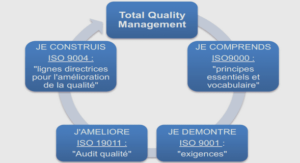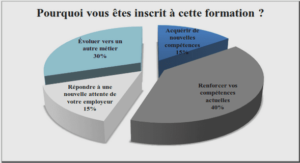LANGUAGE OF HIP HOP AND POLITICAL CHANGES
LANGUAGES CONTACT IN RAP TEXTS
This chapter generally deals with the phenomenon of borrowing in the different rap texts. This means the whole forms of code alternation that are used by rappers. In rap texts, the phenomenon of borrowing is expressed through a multitude of forms. Indeed, borrowing means the passage of a term or an expression from one language to another. According to the dictionary of linguistique et des sciences du langage 190 : L‘emprunt linguistique quand un parler A utilise et finit par intégrer une unité ou un trait linguistique qui existait précédemment dans un parler B (dit langue source) et que A ne possédait pas ; l‘unité ou le trait emprunté sont eux même qualifiés d‘emprunts. L‘emprunt est le phénomène sociolinguistique le plus important dans les contacts des langues, c‘est-à-dire d‘une manière générale, toutes les fois qu‘il existe un individu apte à se servir totalement ou partiellement de deux parlers différents.191 As for the linguists Hamers and Blanc, they conceive that borrowing is ―un élément d’une langue intégré au système linguistique d’une autre langue ‖. 192 (1989, p.451). For them, this phenomenon consisting of integrating lexical units can be used not only by a bilingual, but also by a monolingual in a language contact situation. They also consider that this linguistic phenomenon makes it possible to enrich the vocabulary of a language: 190 Linguistics and the sciences of language. (my translation). 191 Linguistic borrowing when a dialect A uses and ends up integrating a unit or a linguistic trait that previously existed in dialect B (called source language) and that A did not possess; the unit or the borrowed trait are themselves qualified as borrowing. Borrowing is the most important sociolinguistic phenomenon in the contacts of languages, that is to say in a general way, whenever there is an individual able to use totally or partially two different dialects. (my translation). 192 An element of a language integrated into the linguistic system of another language. (my translation). Une grande partie des langues du monde n‘est pas écrite ; beaucoup ne possèdent pas le vocabulaire de la terminologie scientifique et technique indispensable dans le monde moderne ; mais ce ne sont pas là des obstacles insurmontables : la planification linguistique se doit de doter les langues d‘une forme écrite et d‘un vocabulaire adéquat par la néologie ou l‘emprunt193 (1989, p.332). Besides these definitions, one can also quote the one proposed by the linguist J.DUBOIS. The latter explains that linguistic borrowing is a linguistic process in which a ― parler A utilise et finit par intégrer une unité ou un trait linguistique qui existait précédemment dans un parler B et que A ne possédait pas, l’unité ou le trait emprunté sont eux-même appelés emprunt‖ 194 (1973, p.188 as cited in ABBACI, 2015, p.45). Indeed, in the rap texts, this phenomenon of borrowing is expressed through codeswitching. This means an alternation of codes or mixture between two or more languages. According to Ayo Banjo, ―l’alternance codique est un phénomène dans lequel deux interlocuteurs (ou le même locuteur) s’expriment tantôt dans la langue A et tantôt dans la langue B. Le mélange codique, lui, désigne un acte de parole constitué d’éléments de la langue A et de la langue B‖ 195 (1982, as cited in Maiga, 2013, p.217). And as for J. Hamers and M.Blanc, they define it as: 193 The most part of languages of the world are not written; many do not possess the vocabulary of scientific and technical terminology indispensable in the modern world; but these are not insurmountable obstacles: the linguistic planning must provide languages with a written form and an adequate vocabulary through neology or borrowing. (my translation). 194 dialect A uses and ends up integrating a unit or linguistic trait that previously existed in a dialect B and that A did not possess, the unity or the borrowed trait are themselves called borrowing. (my translation). 195 Alternation of code is a phenomenon in which two speakers (or the same speaker) are sometimes expressing in the language A and sometimes in the language B. The code-mixing, it refers to a speech act constituted of elements of language A and language B. (my translation). 242 Par le transfert d‘éléments d‘une langue l Y dan la langue de base l x, dans l‘énoncé mixte qui en résulte on peut distinguer des segments unilingues de l x alternant avec les éléments de l x qui font appel à des règles des deux codes. A la différence de l‘emprunt généralement limité à des unités lexicales, le mélange de code transfère des éléments à des unités appartenant à tous les niveaux linguistiques et pouvant aller de l‘Item lexical à la phrase entière : si bien qu‘a la limite il n‘est pas toujours facile de distinguer le code mixing du code switching. Comme l‘alternance de code, le code mixing est une stratégie de bilingue, alors que l‘emprunt n‘en est pas nécessairement une mais peut être pratiqué par des monolingues en situation de contact de langues. (1994, p.89).196 The analysis of the corpus shows that this phenomenon is more common in Y en a marre rap texts than in American Activist ones. For American Activist rap texts, there are only two rappers who used this. For the analysis of the different forms of code alternation, we focused on syntactic alternation, meaning the intra-sentential alternation, the inter-sentential alternation and extra-sentential alternation (Poplack, 1988), lexical alternation and morphological alternation. 9.1 SYNTACTIC ALTERNATION For this case of alternation, it is the fact of inserting some segments in a semantic and syntactic statement. Indeed, this form of alternation is used by rappers through intra-sentential alternation, the inter-sentential alternation and extra-sentential alternation. 196 By the transfer of elements of a language l Y into the basic language l X, in the mixed statement that results from it one can distinguish unilingual segments of l X alternating with the elements of l X which use rules of the two codes. Unlike borrowing generally limited to lexical units, the code mix transfers elements to units belonging to all linguistic levels and can range from the lexical item to the entire sentence: so that at the limit it is not always easy to distinguish the mixing code from the switching code. Like code alternation, code mixing is a bilingual strategy, while borrowing is not necessarily one, but can be practised by monolinguals in a language contact situation.(my translation).
INTER-SENTENTIAL CODE-SWITCHING
This type of code-switching only exits in Y en a marre rap texts, and it is a syntagm or a sentence of L2 language which is alternated with a syntagm or a sentence from the basic language L1. This means that in their songs, Y en marre rappers completely break away from one language and sung the rest in another language. This is the case with the code-switching that appears between Wolof-French in (280), English-Wolof in (281) and Arabic-Wolof in (282). 280-―Xeex mu dañ Ko tëj faat bakkan Y en a marre veut déranger Translation Fight to make an end of this You kill your prisoners Y en a marre wants to disturb The song title Maintenant ça suffit ―it’s enough now‖ ‖ 281-―The generation gotta block everything Papi Mami got not understand to decide vote Tog di wax kasaw kasaw ñoko tal Translation There are only here for nonsense The song title: 6tm‖ 282-―Onsubbilahi minna chaytani rajjim Yal nañu Yalla mussal Translation May God protect us from satan May God protect us The song title: do tuñu moy ―we will not be mistaken‖
INTRA-SENTENTIAL CODE-SWITCHING
This kind of alternation only appears in Y en a marre rap texts, so these rappers, in their songs, include a segment of languages such as French and English within a syntagm of their basic language which is Wolof. This can be noticed in statements (283) and (284). 283-―Jëmbët education on the next moy mujëm Translation His only solution is to develop education The song title: Daas fanaanal ―sharpen the weapon‖ ‖ 284-―Sama tribunal conscience sa ma jugé Translation My tribunal of consciousness judged me The song title: mea culpa‖
EXTRA-SENTENTIAL CODE-SWITCHING
Y en a marre and American Activist rappers used extra-sentential alternation in their texts through the insertion of a fixed expression or an idiomatic locution from languages such as French in (285), (286), (287), (288), in a statement of the basic language which is Wolof for Y en a marre rappers and English for American Activist ones. These insertions are realized without syntactic constraints and they appear at the beginning or the end of sentences. This phenomenon is much more common in Y en a marre rap texts than in those of American Activist. 285-―Duñu nanggu notre destin soit forclos Maaye, sur maaye, saaye tu fais chier Translation We won’t accept to have a foreclosed future Presents and presents, you make shit The song title: goutte de trop ―too drop‖ ‖ 245 286-―Yatax bað bað la politique Xirrok, ɳayo, xaste Lo def bolle la polémique Translation Because of you I dislike politics Problems, problems and problems Whatever you do is polemic The song title: faux pas forcé ―do not force‖ ‖ 287-―It‘s all one song short of a set list Couple croissants shy of a continental breakfast The song title: Around my way 288-―Throw ‗em some Maybach keys Fuck it, c’est la vie The song title: new slaves‖ 9.2 LEXICAL ALTERNATION In our corpus, we also find that lexical code-switching is more visible in Y en a marre rap texts than in American Activist ones. With this kind of alternation, singles words of a foreign language are inserted in structures. These words may be borrowed from French language as in (289) and (292), English language in (290), or Arabic language in (291) and (293). In rap texts, these forms are generally nouns, adjectives, adverbs or verbs. In (289), manquer is a transitive and intransitive verb in infinitive. In (290), life is substantive, hard is an adjective. In (291) charia, farata, sunna, Diine are substantive designating abstract nouns. In (292), boucher is a substantive designates a person‘s profession and in (293) Jihad and Islam are substantive the notions are abstract designating abstract nouns. 246 289-―Bu si manquer sa falluwaat mënta daggan Translation If each of them lack, your reelection will not be possible‘) The song title: faux pas forcé ‗do not force‘‖ 290-―Life bu hard moñu dar Translation Our living conditions are very hard The song title: 6tm‖ 291-―Limuy dig le du charia du farata du sunna Diine bi ñuy mbumbo ak di xëcco allalu aduna Translation What he is instructing is not jurisprudence, obligation They disrespect relegion and run after money The song title: Li lumu doon ‗what is this‖ 292-―I‘m‘bout to wild the fuck out I‘m goin‘ Bobby Boucher The song title: new slaves‖ 293-―Jihad is not a holy war, where‘s that in the worship Murdering is not Islam, and you are not observant The song title: Words I never said‖.
GENERAL INTRODUCTION |



